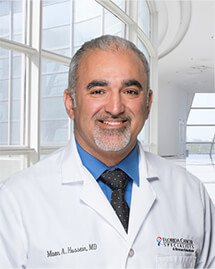Author(s): Yen-Shen Lu, MD, PhD1; Eznal Izwadi Bin Mohd Mahidin, MD2; Hamdy Azim, MD3; Yesim Eralp, MD4; Yoon Sim Yap, MD, PhD5; Seock-Ah Im, MD, PhD6; Julie Rihani7; Erhan Gokmen, MD, PhD8; Ahmed El Bastawisy, MD9; Nuri Karadurmus, MD10; Yueh Ni Lim, MD11; Chun Sen Lim, MD12; Le Thanh Duc, MD13; Wei-Pang Chung, MD14; K. Govind Babu, MD15; Konstantin Penkov, MD16; James Bowles, BMedSci17; Teresa Delgar Alfaro, PharmD, MSc17; Jiwen Wu, PhD18; Melissa Gao, MD, PhD17; Khemaies Slimane, MD17; Nagi S. El Saghir, MD19
Author Affiliations
1National Taiwan University Hospital, Taipei, Taiwan; 2Hospital Kuala Lumpur, Kuala Lumpur, Malaysia; 3School of Medicine, Cairo University, Cairo, Egypt; 4Acıbadem Research Institute of Senology, Acıbadem University, Istanbul, Turkey; 5National Cancer Centre Singapore, Singapore; 6Seoul National University Hospital, Cancer Research Institute, Seoul National University College of Medicine, Seoul, Republic of Korea; 7Independent Patient Advocate, Amman, Jordan; 8Ege University Faculty of Medicine, Izmir, Turkey; 9National Cancer Institute, Cairo University, Giza, Egypt; 10Gülhane Education and Research Hospital, University of Health Sciences, Ankara, Turkey; 11Sarawak General Hospital, Kuching, Sarawak, Malaysia; 12Hospital Sultan Ismail, Johor Bharu, Johor Darul Ta’zim, Malaysia; 13National Cancer Hospital, Hanoi, Vietnam; 14National Cheng Kung University Hospital, College of Medicine, National Cheng Kung University, Tainan, Taiwan; 15HCG Curie Centre of Oncology and Kidwai Memorial Institute of Oncology, Bangalore, India; 16Private Medical Institution Euromedservice, St Petersburg, Russian Federation; 17Novartis Pharma AG, Basel, Switzerland; 18Novartis Pharmaceuticals Corporation, East Hanover, NJ; 19American University of Beirut Medical Center, Beirut, Lebanon
